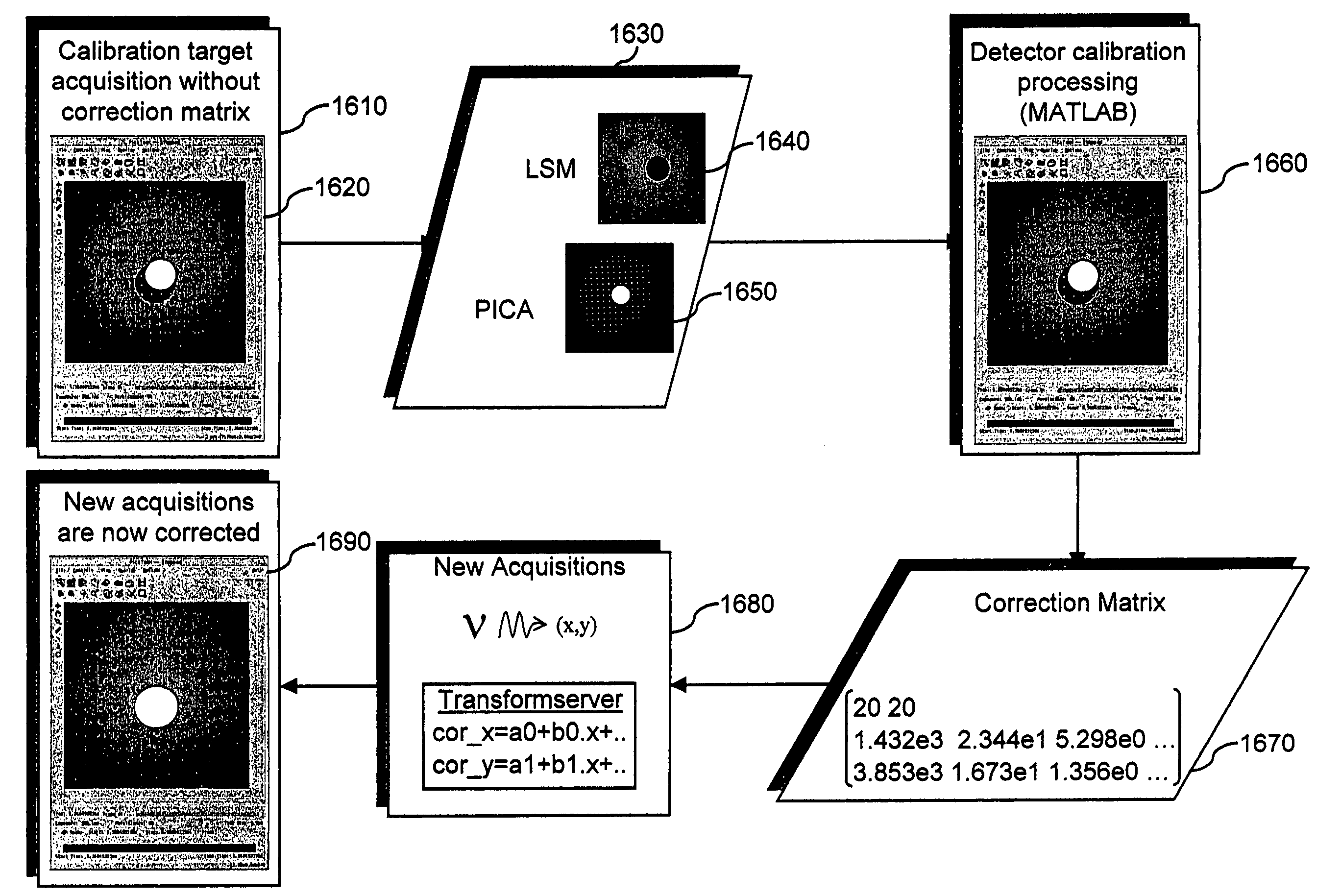PICA system detector calibration
a detector and detector technology, applied in the field of detector signal calibration, can solve the problems of time-consuming fault localization methods using beam probe systems, easy perturbation of devices, slow design process, etc., and achieve the effect of less intensity gradients
- Summary
- Abstract
- Description
- Claims
- Application Information
AI Technical Summary
Problems solved by technology
Method used
Image
Examples
first embodiment
[0071]Computing correction coefficients in accordance with embodiments of the invention will now be described. A first embodiment is based on a local correction: coefficients are found for a bilinear equation that gives the transformation of a rectangle formed by four blobs in the PICA image to fit its associated rectangle in the LSM image. An extrapolation of these coefficients for the rectangles at the outer edges of the image is done where there is no identified blob in the PICA image. For the matching rectangle in the emission image, if there are M points inside this rectangle, the corrected coordinates (cx,cy) for the nth point can be expressed in function of the observed coordinates (x,y) using the following equations:
[0072]cxn=ai0+ai1xn+ai2yn+ai3xnyncyn=bi0+bi1xn+bi2yn+bi3xnynforn=1,M
[0073]As the corrected coordinates are in fact the coordinates in the LSM image, the system above can be resolved and the (aij, bij) coefficients found for each rectangle are stored i...
second embodiment
[0075]A second embodiment for computing correction coefficients is based on a global correction. Global transformations impose a single mapping function on the whole image. The general model for characterizing misregistration between two images is a pair of bivariate polynomials. The coefficients of the polynomials are adjusted using all the matching blobs in both images. Polynomials of degree one or more can be used.
[0076]Polynomials of degree one are sufficient for correcting shift or rotation, but is not adequate for correcting distortion. Polynomials of degree two are sufficient to model most of the usual deformations such as scale, shift and rotation. Polynomials of degree three or more will correct for distortion, though degree four or more has been found to introduce noise. This method avoids the need for extrapolation anymore and is much less time-consuming.
[0077]The corrected coordinates are linked with the observed ones by the following polynomial equations:
[0078]cx=∑p=0N...
PUM
 Login to View More
Login to View More Abstract
Description
Claims
Application Information
 Login to View More
Login to View More - R&D
- Intellectual Property
- Life Sciences
- Materials
- Tech Scout
- Unparalleled Data Quality
- Higher Quality Content
- 60% Fewer Hallucinations
Browse by: Latest US Patents, China's latest patents, Technical Efficacy Thesaurus, Application Domain, Technology Topic, Popular Technical Reports.
© 2025 PatSnap. All rights reserved.Legal|Privacy policy|Modern Slavery Act Transparency Statement|Sitemap|About US| Contact US: help@patsnap.com



